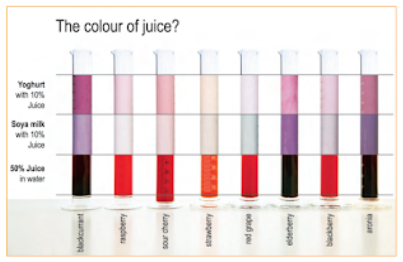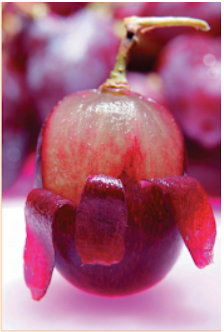A few years ago we wrote an article about the use of fruit juices as natural colouring agents in the industry, so we thought we'd revisit this in order for you to take in key information about how in particular red fruit juices can enhance or change the colour of recipes.
“We conducted a very straightforward demonstration of how juices behave in different circumstances and made five per cent juice recipes with water, soya milk and yoghurt.
As we would have anticipated, each juice changed colour as a reaction to such things as pH or the presence of proteins. Anthocyanins, just as with litmus indicator, can change from bright red to blue depending on the pH.
Fruit Juice Manufacturing and Colours
So we can see that the best juices to use as colouring agents are blackcurrant, elderberry and aronia. However, the taste of blackcurrant is very strong and so generally elderberry and aronia would be used in cases where fruit flavour was not required.
Raspberry, strawberry, sour cherry and blackberry would not make particularly good pigments and in addition, their flavours are quite distinctive.
Our R&D department produces several thousand recipes a year using the various characteristics of red juices which can form the basis of many fruit compounds and preparations”

“This photograph of a peeled red grape shows that the red pigment which gives the grape its colour is only skin deep”

If you would like to find out more about how we can help you
with your fruit juice manufacturing needs, please do not
hesitate to get in touch with our dedicated team today on
01582 362200.
